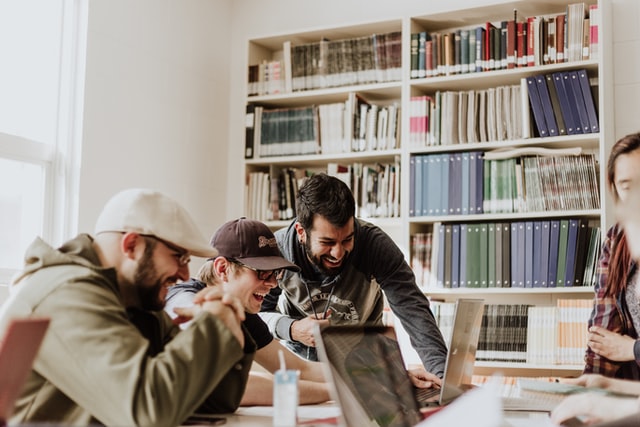Google analytics has been getting increasingly savvy about providing data from social-media driven website traffic. One of the metrics that tends to be off is bounce rate. “Bounce rate” is the percentage of single-page visits. Unlike the other numbers and percentages you see in Google analytics, this is the odd one – it’s the one you want to see go down on a regular basis. The lower the bounce rate, the less people are leaving your site directly after landing on it.
Bounce rates vary from source to source, with social typically trending higher. This may seem scary if your social media bounce rate is 2-3 times that of your bounce rate percentages from other sources. We see this all the time with hotels and restaurants.
The key to not flipping out over bounce rate is compare your social bounce rate to other social bounce rates rather than your rates from other sources.
So what is a good social media bounce rate, anyway?

In a Mashable article on bounce rate metrics, Morra Aarons-Mele, founder of the digital cause marketing agency Women Online, explains:
“An average bounce rate is about 50%.” Aarons-Mele reiterates that consumers live in their feeds, and that is a golden opportunity for brands. “Use social media content to engage people, and keep them informed and entertained. But when you really need to reach them — use email and social media. This way, you can get your content out to people without having to rely on them coming to your site of their own volition, and probably ‘bouncing’ off.”
Aarons-Mele touches upon some valid points. The note about consumers living in their feeds is important. If you’re one of those people on a social network and pretty focused on your feed, you may click on a link out of curiosity, but not necessarily a strong desire to peruse the whole website you’ve just landed on.
The bounce rate for social is usually higher
From what I’ve seen on behalf of hotel and restaurant clients, people like and are interested in very specific niche items, and they probably go to the website to investigate those specific things (i.e. Sunday brunch, tea, specific events, holiday happenings, etc.) but don’t necessarily surf the site beyond that, and may also not be the kind of customer that would necessarily book an over-night stay.
Social should be used more as a tool with which to engage people, spread brand awareness, etc. Tracy Hermans, Web Analyst for leading specialty retailer Wet Seal, notes the bounce rate is typically higher for social because the platform is so different.
“You can look at the campaign and check the percentage of new visitors to your site, then check if they had a call to action on site (or whatever the end goal was for the campaign),” Tracy says. “We wouldn’t necessarily regularly measure anything with bounce rate percentage because it is typically higher on social and it doesn’t speak to social engagement.”

The importance of social engagement
The engagement side is critical for hotels when so many travel decisions are being made online and through the aid of social networks. Obviously, if social media posts drive traffic to the website as well, that’s great. However, keeping the focus more so on the trust aspect and establishing those relationships and subsequent credibility will hopefully encourage someone (when they’re in the mindset of “I need to plan a vacation” as opposed to “I’m arbitrarily scrolling through my social media feeds”) to recall the property and be inspired to then visit the property’s website.
It could also be useful for hotels to have a more strategic approach in regard to where on their websites they’re sending people from social media. Many hotels construct Facebook posts that sent people to various pages on the website: the homepage, the packages page, the wedding page, etc. These posts are often well written and often include scenic images.
What are your ultimate goals for social media?
While this approach is great and seems to do well in regard to garnering engagement, perhaps there needs to be a larger discussion surrounding social media goals. If the goal is most so to drive website traffic/retain website visitors, maybe more direct wording on social media posts would entice more clicks. Perhaps more explicit calls to action (in posts and on the website – maybe targeted social media landing pages should be created…)
Is it time to spruce up your social media content?
Sprucing up the kinds of content shared helps, too. For example, right now, if I follow a restaurant’s Facebook page and regularly see their posts, it’ll become evident after the first few clicks on the links that they’re ALWAYS just linking to their site. I know that will happen. So now when I’m scrolling through my Facebook feed and see their posts, I won’t bother clicking anymore because I know what I’m going to get.
BUT, if they start varying the content, it revives that element of surprise. That makes them a resource on (travel, their city, local events / attractions / happenings, etc.) and I’ll be more curious to click on their links to see what they’re sharing.
What strategies have you employed to attempt to lower your social media bounce rate?
Check out these resources for additional social media marketing advice:
- A Social Media Strategy Template That Works
- How to Conduct a Social Media Audit the Easy Way
- Social Media Demographics: What Marketers Need to Know in 2025
Hero photo by Priscilla Du Preez on Unsplash









